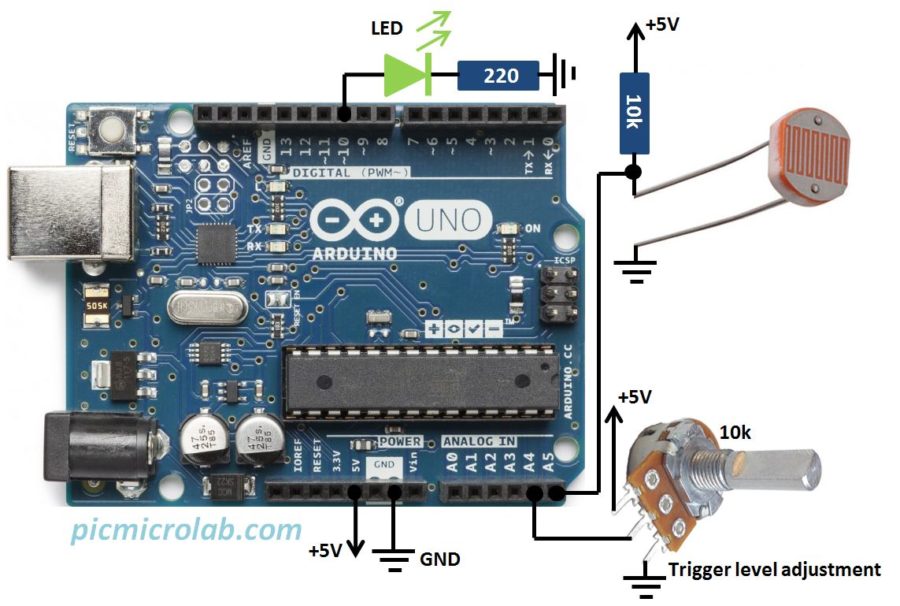

Įxplore the sample circuit embedded here in the workplane by clicking Start Simulation and clicking on the photoresistor (brown oval with squiggly line down the middle), then drag the brightness slider to adjust the simulated light input. Remember that Arduino's analog inputs (pins marked A0-A6) can detect a gradually changing electrical signal, and translates that signal into a number between. So far you've already learned to control LEDs with Arduino's analog output, and to read a potentiometer, which is another type of variable resistor, so we'll build on those skills in this lesson. It's also called an LDR (light-dependent resistor).
#SWITCH CASE ARDUINO LIGHT SENSOR HOW TO#
Hope this has helped you understand what switch case statements are and how to use them when programming the Arduino.Let's learn how to read a photoresistor, a light-sensitive type of variable resistor, using Arduino's Analog Input.
#SWITCH CASE ARDUINO LIGHT SENSOR SERIAL#
So the code inside the default statement prints out “Sensor error” to the serial monitor. For instance, if none of the case statements are executed there could be something wrong with the sensor. The default statement will be executed if none of the case statements match the switch condition. The switch case statement ends with a default statement. It prevents the program from checking all of the other case statements against the switch condition after it has found a match. The break keyword makes the program exit the switch statement after the case statement has been executed. If temp equals three, case 3 will be executed and “Temperature is high” will be printed to the serial monitor.Įach case statement ends with the break keyword.

For example if temp equals two, case 2 will be executed and “Temperature is medium” will be printed to the serial monitor. If the value stored in the variable matches the case number, the code inside the body of the case statement will be executed. The switch statement looks at the variable inside the parentheses ( temp) and compares it to each one of the case statements. These numbers represent the low, medium, and high temperature ranges, respectively. Next we use temp = temp / 341 to convert the value stored in temp to either one, two, or three. The value will be between, depending on the temperature it measures. The Arduino will take a reading from the thermistorPin and store the value in the temp variable. In the loop() section, we declare a variable called temp to store the analog read value from the thermistorPin. Analog pins are assumed to be inputs so we don’t need to use the pinMode() function here. In the setup() section, we initialize the serial monitor. This sketch will take a reading from a temperature sensor and print low, medium, or high to the serial monitor depending on the temperature reading: const int thermistorPin = A0 Īt the top of the sketch we declare a pin variable called thermistorPin and set it equal to analog pin A0. Let’s take a look at an example sketch to understand this better. It includes all of the parts, wiring diagrams, code, and step-by-step instructions for 58 different robotics and internet of things projects that are super fun to build! The 3-in-1 Smart Car and IOT Learning Kit from SunFounder has everything you need to learn how to master the Arduino.


 0 kommentar(er)
0 kommentar(er)
